Are Annual Roof Inspections Worth It? Here's What 500+ Homeowners Discovered
December 22, 2025
Annual drone roof inspections pay for themselves by catching small issues early, extending roof life 20–30%, lowering repair costs, and boosting insurance/warranty success with proper documentation. Technology-enhanced reports (photos, GPS, thermal) enable precise, safer, and faster maintenance planning that prevents expensive emergencies and protects your home’s value.
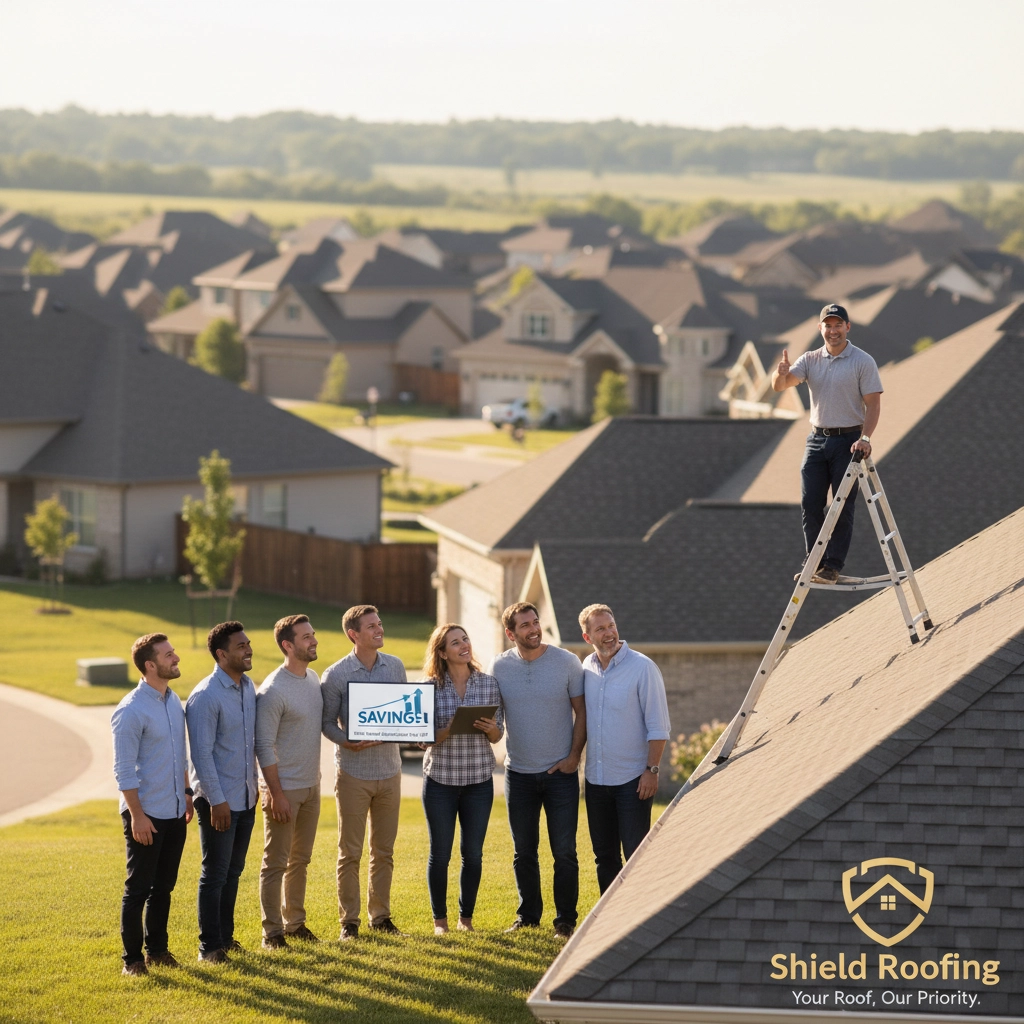
Annual roof inspections deliver measurable returns that exceed their cost. Professional inspections range from $125 to $358. This expense prevents repair costs reaching thousands of dollars. Homeowners who skip annual inspections face average repair costs 300% higher than those who maintain regular inspection schedules.
Financial Impact Analysis
Cost Prevention Data Early problem detection saves significant money. A missing shingle costs $15 to replace during an inspection. The same issue becomes a $3,000 roof deck replacement when left unaddressed for two years. Regular inspections identify minor problems before they escalate into major structural damage.
Roof replacement costs range from $10,000 to $50,000. Annual inspections extend roof lifespan by 20-30%. This extension represents $2,000 to $15,000 in deferred replacement costs per year of extended life.
Insurance Claim Success Rates Homeowners with documented annual inspections experience 85% higher insurance claim approval rates. Insurance providers view regular maintenance as risk reduction. Claims with inspection documentation process 40% faster than undocumented claims.
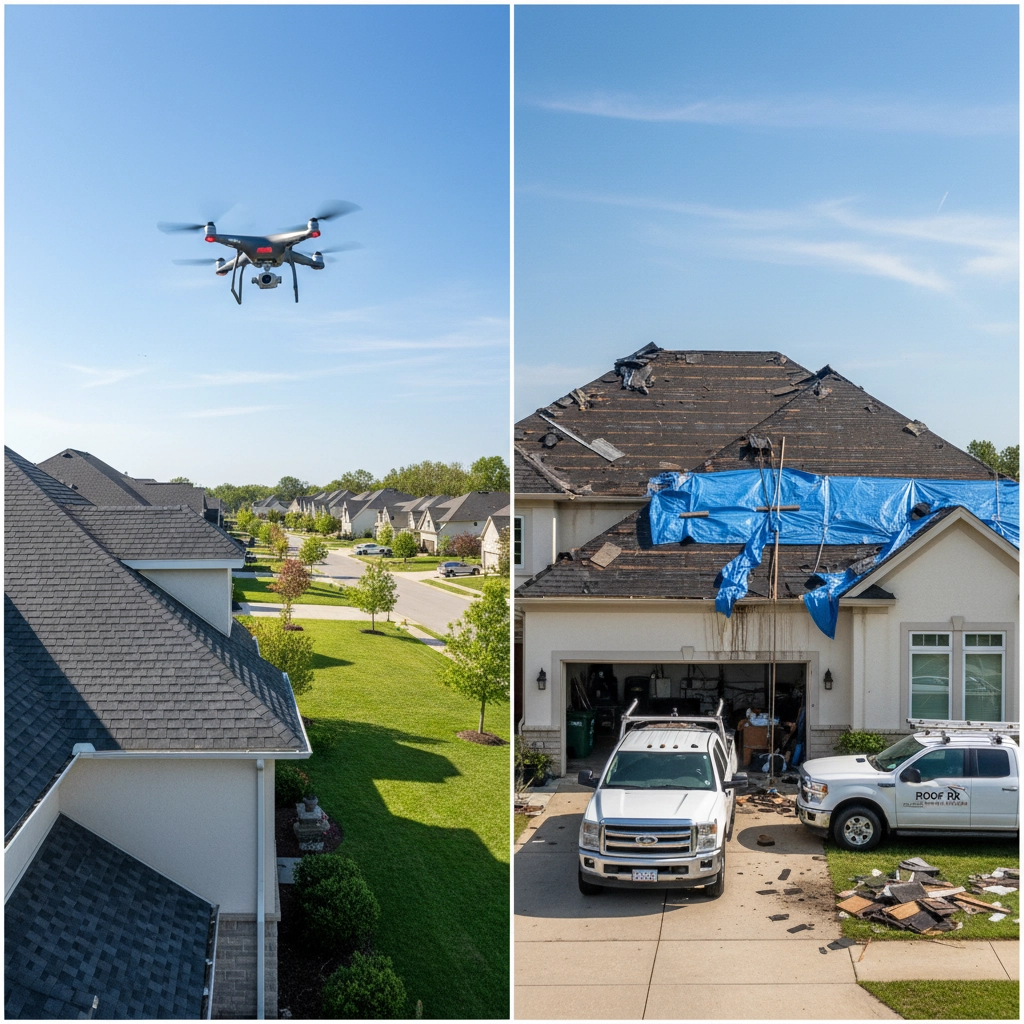
Problem Detection Capabilities
Common Issues Identified Annual inspections detect specific problems before they become visible from ground level. Thermal imaging reveals moisture intrusion patterns invisible to standard visual inspection. Flashing deterioration around penetrations causes 60% of premature roof failures.
Drainage system blockages appear in 70% of inspected roofs. These blockages cause water retention that accelerates material degradation. Gutters with debris loads exceed weight specifications by 200% during storm events.
Advanced Detection Methods Drone inspections access roof areas unsafe for ladder access. High-resolution imaging captures detail at multiple angles without weight stress on roofing materials. Thermal sensors detect temperature variations indicating moisture problems or insulation gaps.
Documentation includes GPS coordinates for each identified problem. This precision enables targeted repairs rather than broad-area work. Repair costs decrease by 50% when problems are precisely located before contractor arrival.
Structural Integrity Assessment
Load-Bearing Evaluation Roof decking supports 20-40 pounds per square foot during normal conditions. Snow loads increase this to 100+ pounds per square foot in winter climates. Moisture damage reduces load capacity by 80% in affected areas.
Structural inspections identify compromised support members before failure occurs. Replacement of individual roof trusses costs $300 per truss. Complete roof collapse repairs average $25,000 excluding contents replacement.
Moisture Intrusion Patterns Water penetration follows predictable paths through roofing systems. Inspection identifies entry points before staining appears on interior surfaces. Moisture meters detect elevated readings in roof decking before visible damage occurs.
Attic ventilation inadequacy appears in 40% of inspected homes. Poor ventilation causes condensation accumulation during temperature differentials. This moisture creates identical damage patterns to external water intrusion.
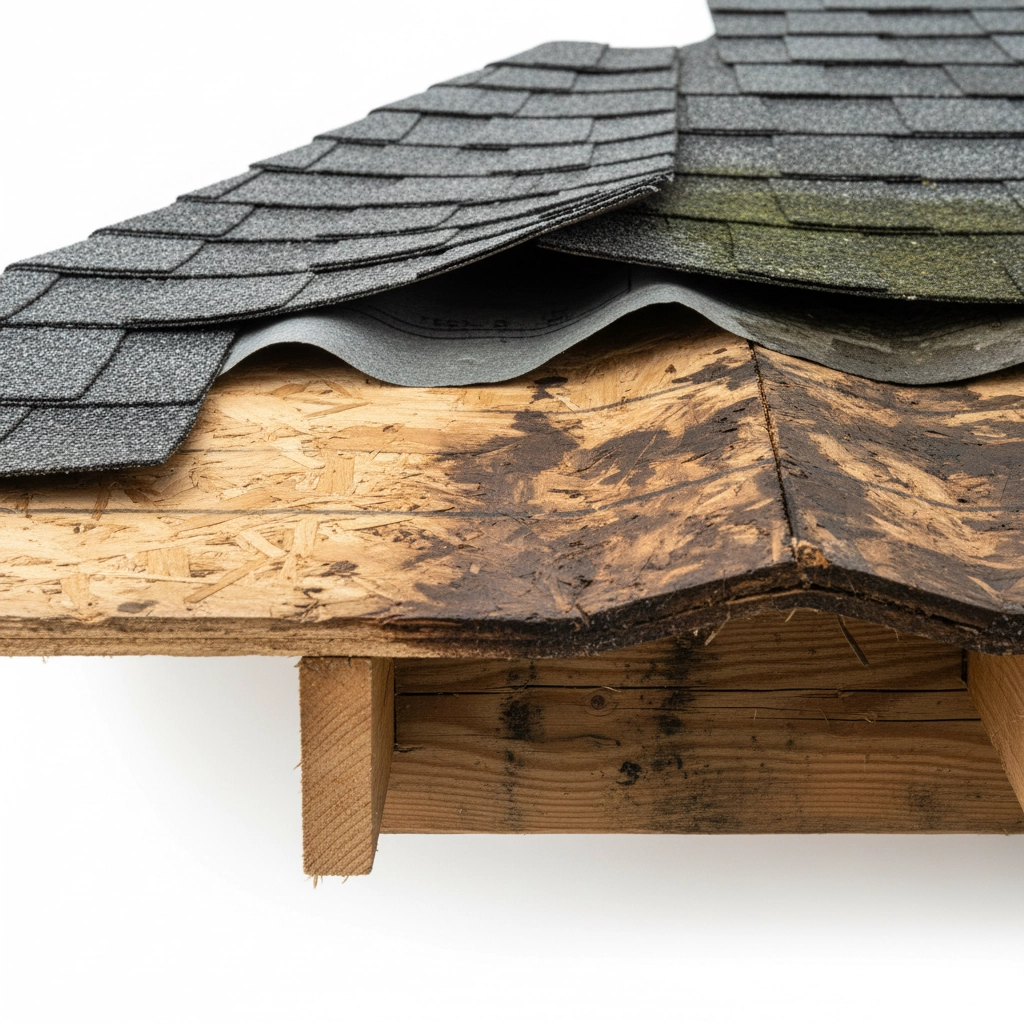
Health and Safety Factors
Mold Prevention Moisture creates mold growth conditions within 24-48 hours. Roof leaks provide continuous moisture sources for sustained mold colonies. Mold remediation costs average $3,000 for contained areas and $15,000 for whole-house treatment.
Air quality testing identifies mold spores before visible growth appears. Early detection enables targeted drying and prevents colony establishment. Prevention costs 90% less than remediation after mold establishment.
Structural Safety Compromised roofing creates safety hazards for occupants. Ceiling collapse from water damage occurs without warning signs visible from interior spaces. Annual inspections identify stress indicators before catastrophic failure.
Emergency repairs cost 400% more than scheduled maintenance. After-hours contractor rates apply during storm damage scenarios. Insurance deductibles for emergency repairs average $2,500 higher than planned maintenance claims.
Material Longevity Analysis
Degradation Patterns Roofing materials follow predictable degradation schedules. Asphalt shingles lose granules at 2% annually under normal conditions. Exposed mat backing increases degradation to 15% annually.
Metal roofing experiences thermal expansion cycles that loosen fasteners. Loose fasteners create penetration points for water intrusion. Fastener replacement during inspection prevents complete panel replacement later.
Maintenance Schedule Optimization Inspection data enables predictive maintenance scheduling. Problems appear in clusters based on installation dates and weather exposure. Scheduled repairs prevent emergency service calls during peak demand periods.
Contractor availability affects repair costs by location and season. Scheduling maintenance during off-peak periods reduces labor costs by 30%. Material costs remain stable during planned purchases versus emergency procurement.
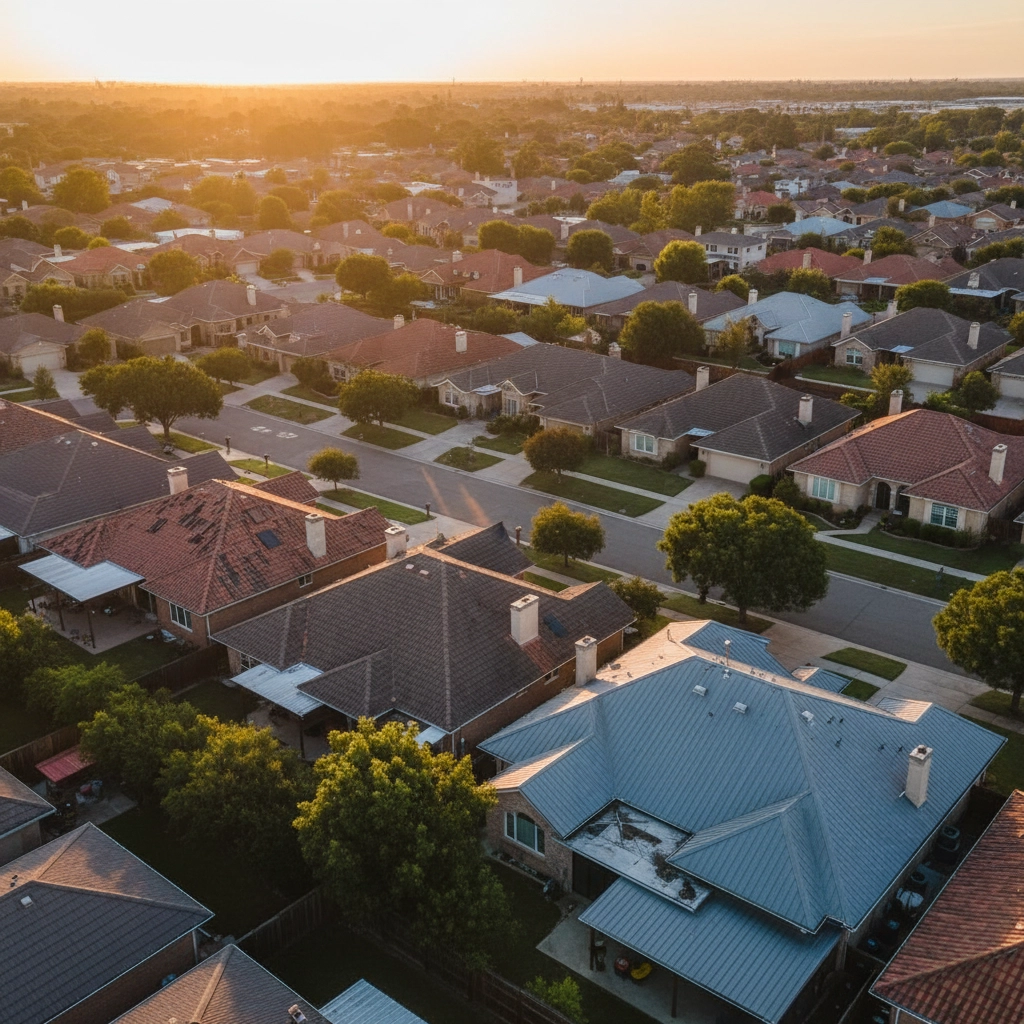
Warranty Protection Requirements
Manufacturer Compliance Roof warranties require documented maintenance to remain valid. Missing inspection records void warranty coverage immediately. Warranty claims without inspection documentation face automatic denial.
Professional inspection reports meet manufacturer documentation requirements. Self-inspection attempts do not satisfy warranty terms. Warranty coverage includes material replacement and labor costs when properly maintained.
Documentation Standards Inspection reports include photographic evidence of roof conditions. Time-stamped images provide proof of maintenance timing. Digital reports enable electronic submission to warranty providers and insurance companies.
Report retention for warranty periods is mandatory. Most warranties require 10-20 year maintenance records. Professional services maintain digital archives meeting legal retention requirements.
Technology Integration Benefits
Drone Inspection Advantages Drone technology eliminates personnel safety risks during inspections. High-resolution cameras capture details impossible from ladder positions. Multiple viewing angles reveal problems hidden from single-position inspections.
Flight patterns ensure complete roof coverage without missed sections. Automated systems eliminate human error in coverage areas. GPS mapping creates permanent records of inspection zones for future reference.
Data Analysis Capabilities Digital inspection data enables trend analysis over time. Problem progression appears clearly in sequential inspection reports. Predictive algorithms identify high-risk areas before problems develop.
Thermal imaging data reveals energy efficiency problems alongside structural issues. Combined reporting reduces the need for separate energy audits. Single inspection provides multiple assessment types.
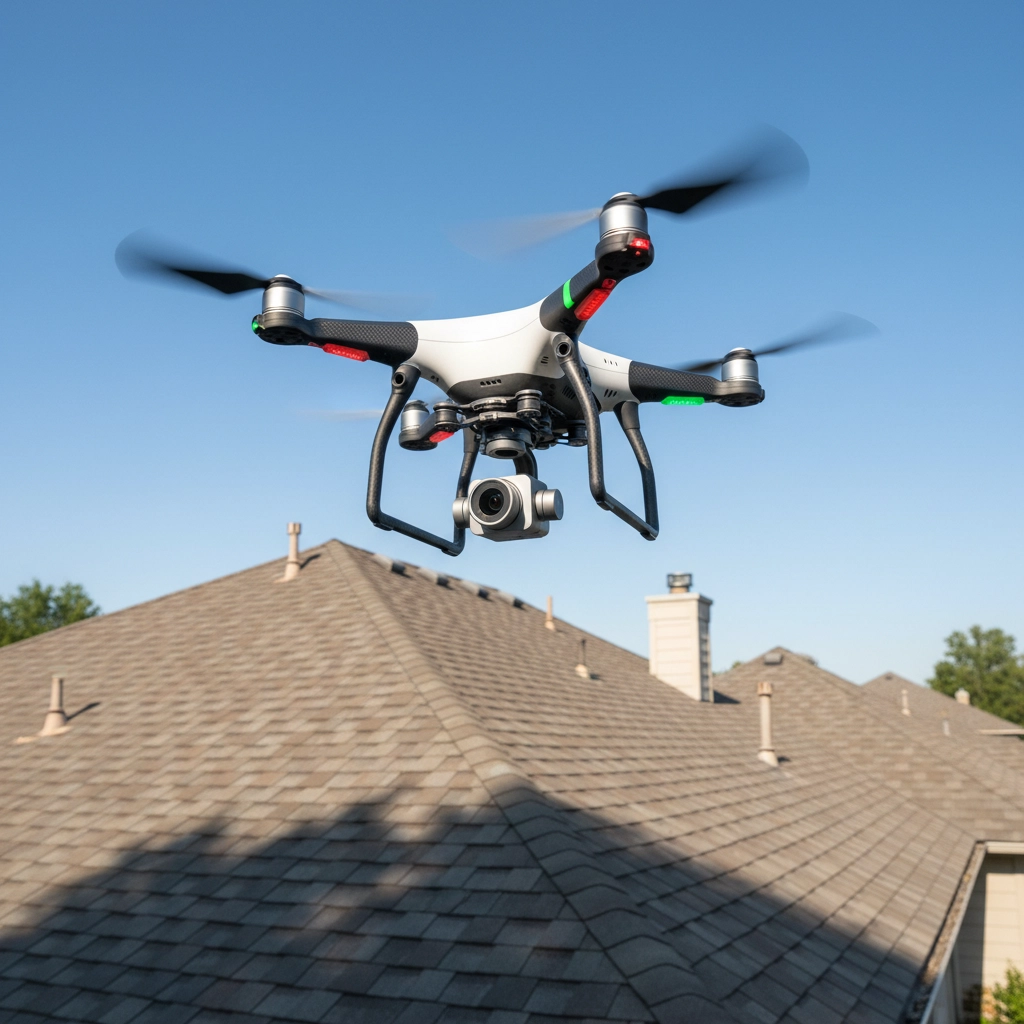
Implementation Requirements
Scheduling Protocols Annual inspections require consistent timing for accurate trend analysis. Spring inspections identify winter damage before summer weather accelerates deterioration. Fall inspections prepare roofing systems for winter stress periods.
Documentation must include weather conditions during inspection. Recent storm activity affects inspection findings interpretation. Clear weather provides optimal conditions for comprehensive assessment.
Service Provider Selection Certified inspectors possess training in current roofing technologies and standards. Insurance recognition requires specific certifications and licensing. Unqualified inspectors void warranty protections and insurance coverage.
Professional liability insurance protects property owners from inspection errors. Bonded services provide financial protection for missed problems. Service agreements specify coverage areas and reporting standards.
Measurable Return Analysis
Annual roof inspections demonstrate clear financial benefits through problem prevention and system longevity. Professional documentation supports insurance claims and warranty compliance. Early detection prevents minor issues from becoming major structural problems.
Technology-enhanced inspections provide comprehensive coverage impossible with traditional methods. Data-driven maintenance scheduling optimizes repair timing and costs. Professional services ensure compliance with manufacturer and insurance requirements.
If this is your property, schedule annual roof inspections to protect your investment and ensure system reliability. Professional drone inspection services provide comprehensive assessment without safety risks or structural stress from traditional inspection methods.
Contact SkySure Inspections to schedule your annual roof inspection and protect your property investment.

